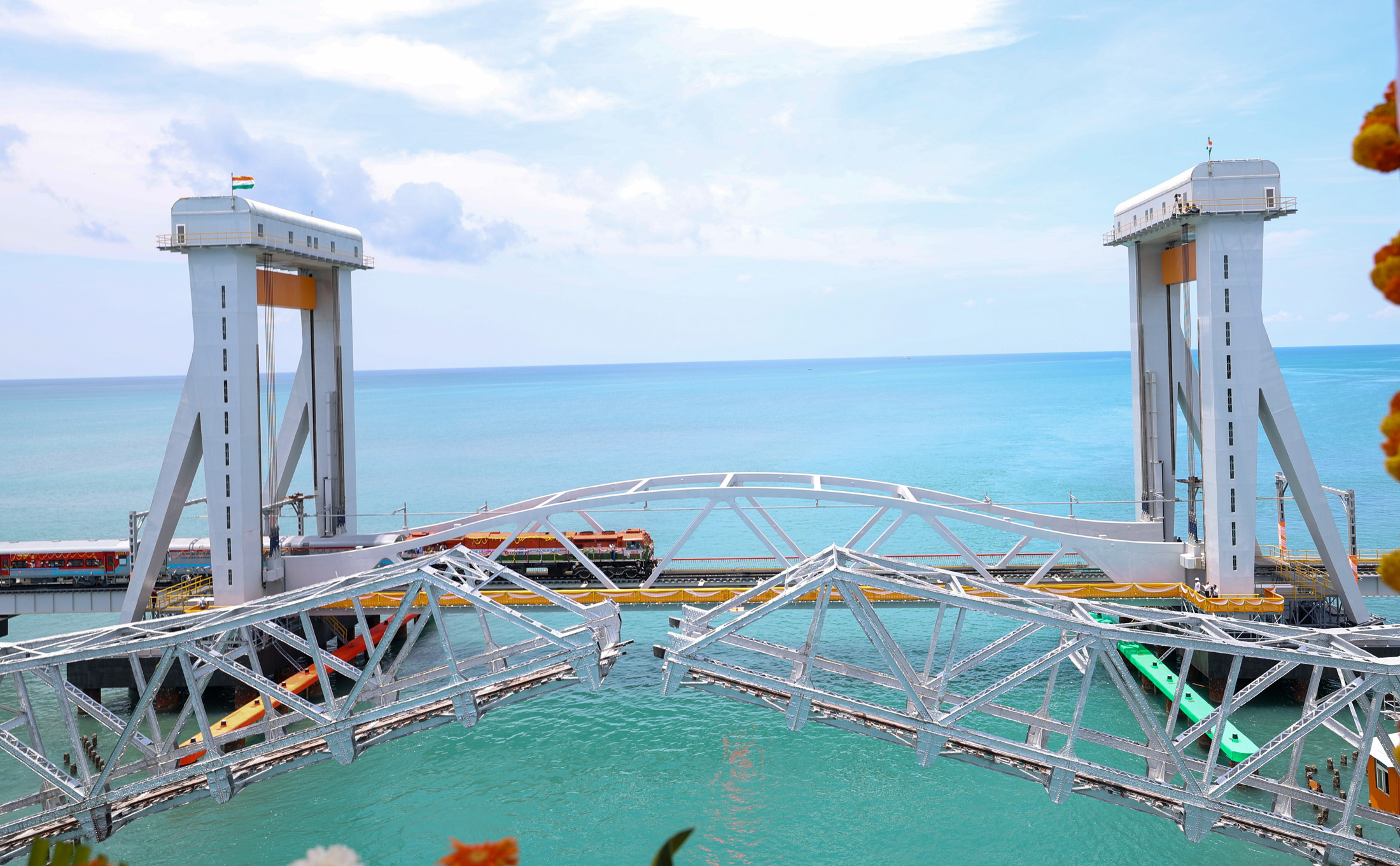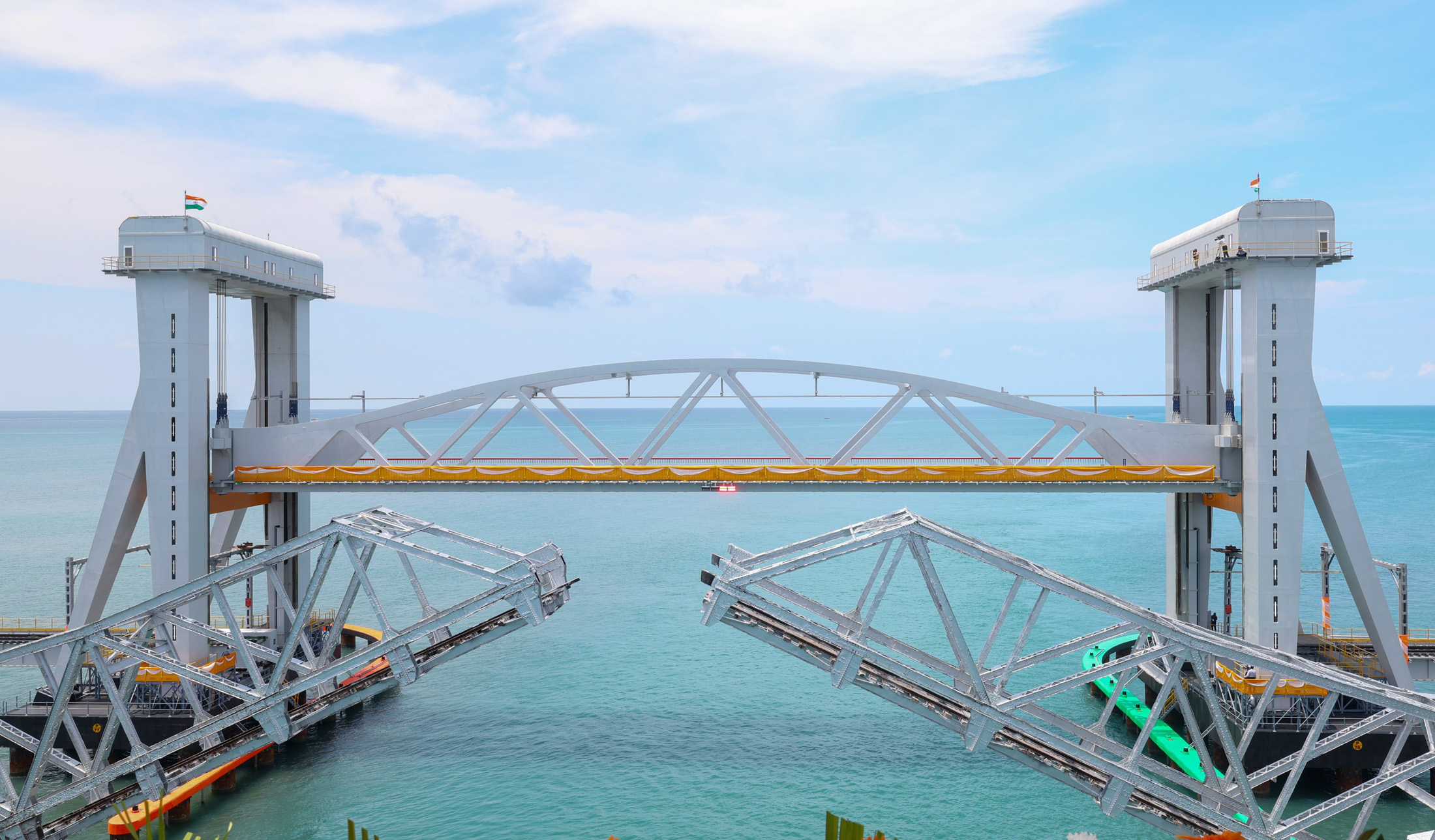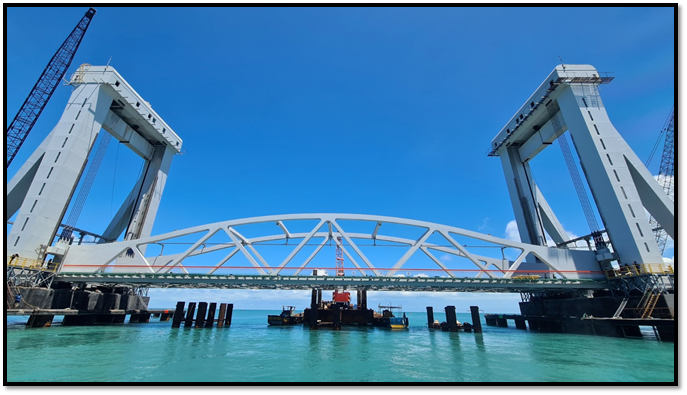
Rameswaram: Envision yourself aboard the exquisite Rameswaram-Tambaram train, gazing out the window as the salty breeze caresses your skin, revealing an uninterrupted panorama of the vast sea. Just as the rhythmic waves lull you into a serene reverie, a breathtaking steel edifice emerges on the horizon, reminiscent of cinematic spectacles. This is the magnificent Pamban Bridge, a groundbreaking achievement that is a testament to India’s engineering prowess.
As you embark on your train journey, allow the sea breeze to inspire a moment of contemplation. Crossing the new Pamban Bridge is not merely traversing water; it is a passage through time, heritage, and innovation. Beneath the surface lies a century of narratives, while above, a vision for India’s future unfolds. This bridge is far more than an engineering feat; it forges connections among people, culture, and aspirations. In its quiet resilience and elegant ascent, it serves as a reminder that true progress encompasses not only the creation of the new but also the reverence for the past, propelling it forward with dignity.
This bridge transcends mere engineering; it embodies profound cultural significance. As narrated in the Ramayana, the creation of Ram Setu began at Dhanushkodi, close to Rameswaram. For pilgrims, it facilitates a quicker and safer journey to Rameswaram, while for the local community, it heralds enhanced connectivity and economic prospects. For the broader Indian populace, it stands as a proud testament to our collective potential.
Nestled in the Pamban Strait, which divides the Indian mainland from the enchanting Rameswaram Island in Tamil Nadu, this remarkable structure is India’s inaugural vertical-lift railway sea bridge. It replaces the venerable Pamban bridge, which has stood for over a century, and transcends mere construction; it embodies the harmonious blend of history and innovation.
What exactly is a Vertical-Lift Railway Sea Bridge? Picture a bridge designed for trains to traverse the sea, yet accommodating the passage of large vessels beneath it. A vertical-lift railway sea bridge is ingeniously crafted to elevate its central section, akin to an elevator, allowing boats to glide safely underneath. Once the vessel has cleared the way, the bridge gracefully descends, enabling the train to resume its journey. This dynamic structure facilitates the seamless coexistence of trains and boats, ensuring that both can navigate their routes without obstruction.
Beneath the majestic facade of the new Pamban Bridge, advanced technology operates discreetly. A three-cup anemometer continuously tracks wind speeds, and should they exceed 58 km/h, it activates an automatic red signal to halt trains, ensuring passenger safety. Concurrently, in the control room situated at sea, an Atmospheric Water Generator transforms humidity from the air into clean drinking water for the staff on-site. These innovations work in harmony to protect lives and support those who maintain the bridge’s operations.
The original Pamban Bridge was a remarkable achievement of its era, inaugurated in 1914 as a vital connection for pilgrims and merchants traveling to the revered island of Rameswaram. However, as the years passed, the relentless forces of nature began to take their toll. The bridge faced the challenges of severe marine conditions, fierce winds, and corrosive salt-laden air, which gradually compromised its integrity.
This prompted the conception of a new, more robust, and intelligent bridge.
Positioned approximately 27 meters north of its predecessor, the new structure spans an impressive 2.07 kilometers over the sea. Its standout feature is a 72.5-meter-long vertical lift span, a pioneering design for Indian Railways. This innovative mechanism allows the central section of the bridge to elevate by 17 meters, facilitating the passage of ships with grace, akin to a segment of the bridge ascending into the heavens.
Yet, the construction process was fraught with challenges.
Engineers faced tumultuous waters, unpredictable winds, and a seabed that tested their every calculation. The materials were meticulously transported, welded, and hoisted with utmost precision.
The new bridge is not only a marvel of engineering but also designed for longevity. Its foundation is anchored deep with over 330 substantial piles, reinforced with stainless steel, and coated with specialized marine-resistant paint to withstand the harsh saline environment. Moreover, while it currently accommodates a single railway track, its robust foundation is prepared for future expansion, ready to embrace the demands of tomorrow.
– global bihari bureau







